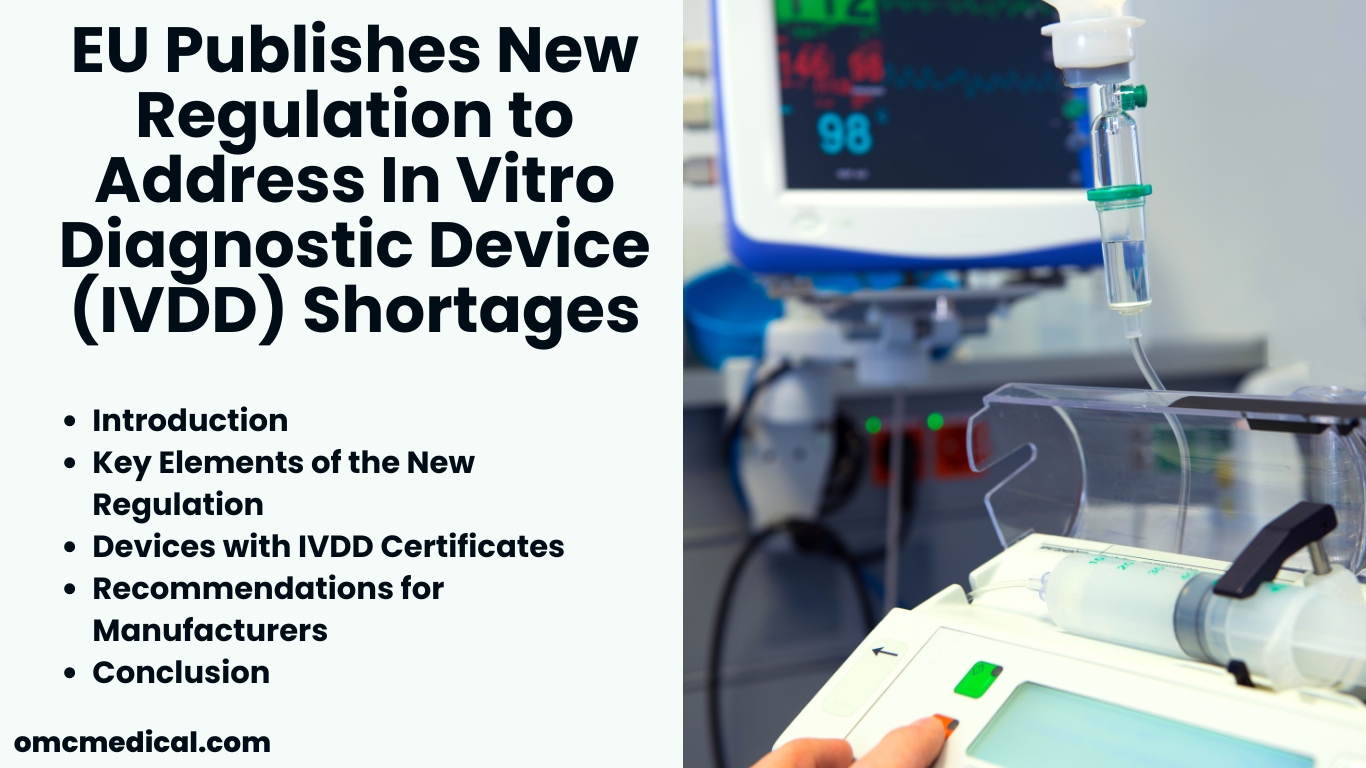Under EU MDR 2017/245 Article 73, the sponsor shall report to all member states about the clinical investigations undertaken by the medical devices through an electronic system in case of any serious adverse events, device deficiency which leads to adverse events or any novel findings with regards to the event.
The submission period may vary depending on the severity of the events. An initial incomplete report followed by the complete report shall be provided.
The reporting procedures are applicable for both Pre-market clinical investigations and Post-market clinical follow-up. Pre-market Clinical Investigation is conducted for non-CE marked medical devices, CE Marked devices outside the intended use as per Articles 62 and 74(2).
From 26th May 2021, a new template shall be used for reporting clinical investigation, which must be filled or updated with all adverse events, or any novel findings or occurrences reported.
This report must be communicated to all National competent authorities. As per Article 34(3), the transition of reports will be made available on EUDAMED when it is completely available and fully functional. The overview of the table format to be used by the sponsor is given below.

Types of clinical investigation:
- As per Article 80(2,3), the clinical investigation may be used for the investigational device for the conformity procedure.
- As per Article 80(5,6), the PMCF investigation in case of serious events or invasive procedures
- Other clinical investigations regarding National Legislation for Safety reporting
In addition to the above-mentioned clinical investigations, there are some exceptions other than the serious adverse events in the causal relationship between the event and the preceding investigational procedure like
- Other relationships unrelated to the preceding investigational procedures need not be reported.
- Few events in the relationship between the procedure or the device, as stated in IFU, shall be taken in context with the vigilance as per Article 87-90
A procedure mandated by the Clinical Investigation Plan that occurred prior to (or at the same time as) the major adverse event is referred to as a “preceding investigational procedure.”
Both the investigational device application process and any additional onerous or intrusive procedure(s) determine whether the study is subject to notification requirements under MDR article 74.
Reporting Events to other Member States/ Third party countries
The sponsors shall report all the clinical investigations to those Member states. In the case of many Clinical investigations conducted for the same device, the specific CIP code (Clinical Investigation Plan Code) is to be reported to the specific Member state.
Reports from Third party countries shall be received through the National Competent Authorities as soon as the clinical investigation is authorized, and all other events occurring in third-party countries need to be reported.
Reported by whom? To Whom and When?
The sponsor of the clinical trial, the manufacturer, the legal agent, or another person or entity, must disclose any reportable events to the National Competent Authorities (NCA).
On the Commission’s website, a list of the phone number of these operational NCAs is published. Member states may also require a supplemental report to the ethics committee(s).
Regarding reporting timelines, investigators must inform sponsors as soon as possible and no later than three days after the investigation site study employees become aware of the incident.
The sponsor must adhere to the following reporting timelines based on the type of clinical study and the severity of the adverse event.

The Investigator’s Brochure, the Clinical Investigation Plan, or the Risk Analysis Report should be consulted during the causality assessment process.
All foreseeably serious adverse events and potential risks need to be listed and evaluated during the clinical investigation. MDCG 2020-10/1 provides clear guidance on harmonizing reports, where the serious adverse events are further classified into the following four levels of causality (investigational device, comparator, procedure):
- Not related: No relationship to the events related to the investigational device, an event that does not affect the device procedure, the serious adverse event that does not follow any known pattern but is related to other causes like concurrent illness, clinical condition or other risk factors
- Possible: The relationship between investigational procedures, devices, or comparator is tenuous but cannot be excluded. Alternative explanations, such as an underlying or concurrent sickness, clinical condition, or course of therapy, are also conceivable. Cases where the relationship cannot be determined or where no information is known should also be categorized as possible.
- Probable: The association with the application of the investigational device, comparator, or procedures appears pertinent, and/or another cause cannot adequately explain the incident.
- Causal relationship: The serious adverse event associated with an investigational device, comparator, or procedure when the event has known side effects which involve a body site or organ or if the event follows a responsive pattern or other possible causes that can cause harm to the subject.
The investigator must identify the relationship between the serious adverse event and the procedure, as they can be related to each other, or they can be related only to the procedure or device itself.
The health care provider can carry out the above procedure as they manage or handle the medical devices.
The reporting form is study-specific and only applies to a particular clinical investigation as identified by a specific clinical investigation plan. The reporting form should be completed in English.
The report file must be compatible with Microsoft Excel before being delivered to the NCAs.
Reporting Form: MDCG 2020-10/2 Clinical Investigation Summary Safety Report Form v1.0
Please refer to MDCG 2020-10/1 safety reporting in clinical investigations of medical devices under the regulation (EU) 2017/745 for Form completion guidelines.











